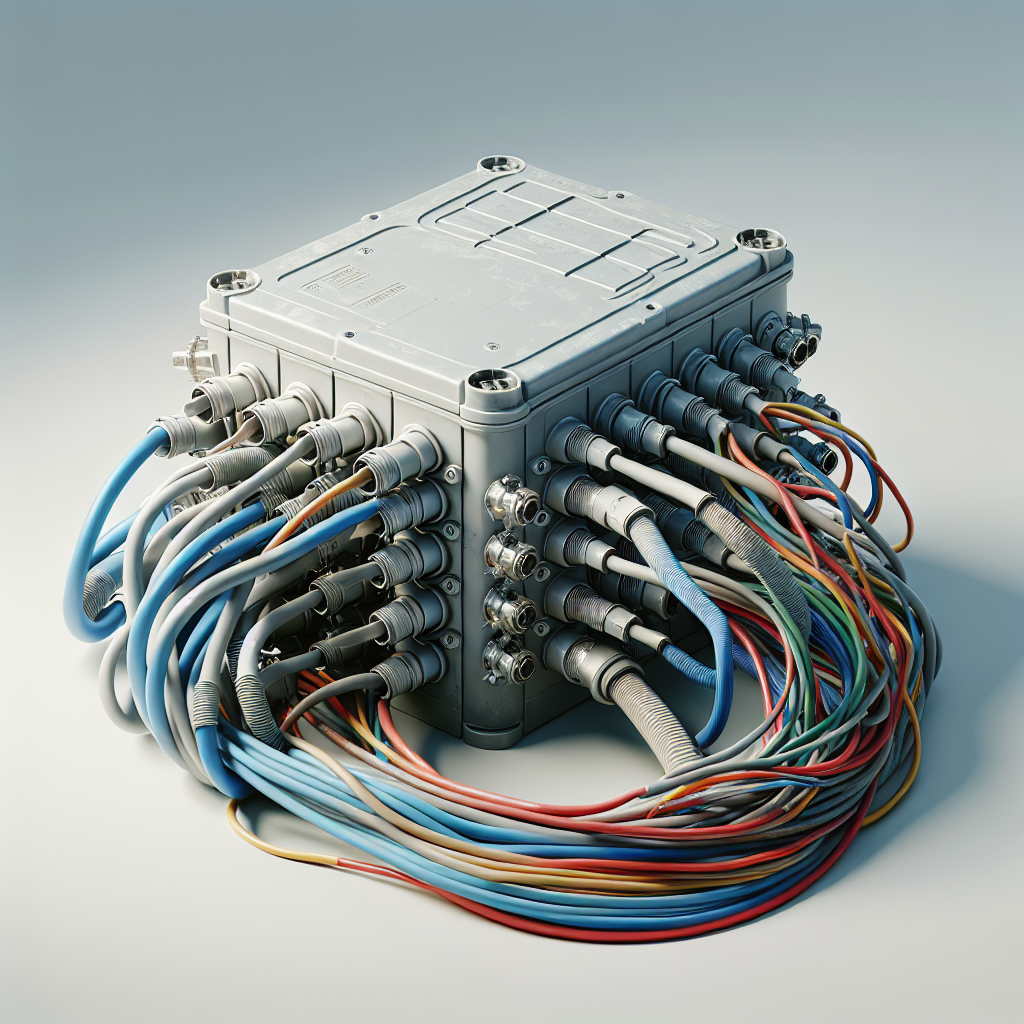Understanding Junction Boxes in Construction
A junction box is an essential component in building construction, often overlooked but crucial for electrical systems.
It is a protective box where electrical wires are connected and safely housed. This ensures seamless transmission of electricity while minimizing the risk of electrical fires and shocks.
Its application in construction is quite expansive, often employed within walls and ceilings, and for outdoor lighting systems. Furthermore, it aids in keeping the electrical system organized, safe, and accessible for future modifications.

Table of Contents
Let’s Jump Into The Junction Box
Defining Junction Box
A junction box—also known as a splice box—is an integral part of the electrical wiring systems found in homes, offices, and other buildings. It provides a safe place for wires to be spliced together and to branch off, ensuring the smooth functioning and safety of the electrical network.
Uses of a Junction Box
Safe Electrical Splices
The primary function of a junction box is to enclose and protect the connections, or splices, of multiple electrical wires. This essential safety feature prevents accidental contact with live wiring, and reduces the risk of electrical fire.
Housing of Electrical Devices
Junction boxes also provide an accessible location for the installation of devices such as switches, outlets, and light fixtures.
Easy Maintenance and Changes
Should changes need to be made or repairs carried out, junction boxes allow easy access to the wired connections without needing to disrupt or dismantle the entire electrical system.
- Safe enclosure for electrical splices
- Housing for electrical devices
- Easy access for maintenance and changes
Standard Dimensions for Junction Boxes
| Type of Box | Standard Size (in inches) |
|---|---|
| Single Gang | 2 x 3 |
| Double Gang | 4 x 4 |
| Three Gang | 6 x 6 |
| Four Gang | 8 x 8 |
Source: Trusted Electricians
Now that you’re familiar with the term and know what a junction box is used for, it’s easy to understand the key role this humble component plays in the vital, behind-the-scenes world of construction and electrical safety.
Whether you’re a professional or a DIY-enthusiast, knowledge of such terms feeds into a wider understanding of the complexities of construction.
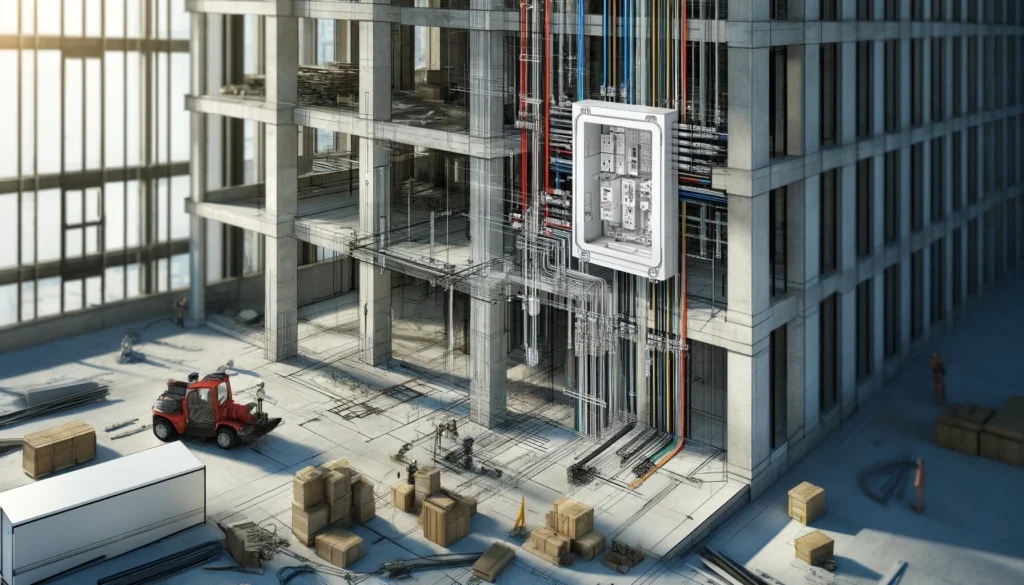
Where To Locate a Junction Box
Every structure is unique and has specific locations where the junction boxes should be installed to aid in electrical work. While we’ve explored what a junction box is, its uses, and its standard dimensions, it is now time to launch into where exactly these boxes should be located.
Typical Locations of Junction Boxes
Junction Boxes in Walls
In residential and commercial buildings, junction boxes are often hidden inside walls, specifically between two wall studs. The choice to conceal junction boxes in walls mainly contributes to the aesthetics of a room, ensuring that visible wires and connectors don’t disrupt the décor. Using a stud finder will effectively guide you to locate a junction box in walls.
Junction Boxes in Ceilings
For light fixtures, ceiling fans, or smoke detectors, junction boxes are typically positioned in the ceiling. In this case, junction boxes act as the main point of connection between the device and the building’s electrical wiring system.
Junction Boxes in Basements and Garages
In unfinished areas such as basements and garages, junction boxes are typically installed directly on exposed wooden framing or masonry. In these areas, aesthetics are often less of a concern, and accessibility for maintenance and making changes is prioritized.
- Inside walls for overall aesthetic appeal
- In ceiling for light fixtures or smoke detectors
- On exposed surfaces in basements and garages
Guidelines for Junction Box Placement
The National Electrical Code (NEC) lays down specific rules concerning the placement of junction boxes. A general rule of thumb as per the NEC is that junction boxes should not be hidden behind drywall or other permanent building materials. Moreover, junction boxes are installed in such a way that their fronts remain exposed, thus enabling easy access for maintenance and wire splicing.
Height Considerations
According to the NEC, junction boxes for general use should be positioned at least 18 inches above the floor. In contrast, junction boxes specifically for electric heating and air conditioning circuits should be mounted at least 7.5 feet above floor level.
Spacing Requirements
Also, the NEC recommends that junction boxes be placed every 12 feet along a circuit for residential applications and every 10 feet for commercial applications. This ensures that the electricians can balance the load across several boxes, reducing the risk of overloading any single box.
Source: Bob Vila
Now, not only are you familiar with what a junction box is, but you also know where these vital electrical components are typically housed in a structure. Understanding their placement can assist you if you ever need to carry out adjustments, repairs, or upgrades to your home or workspace’s electrical system.
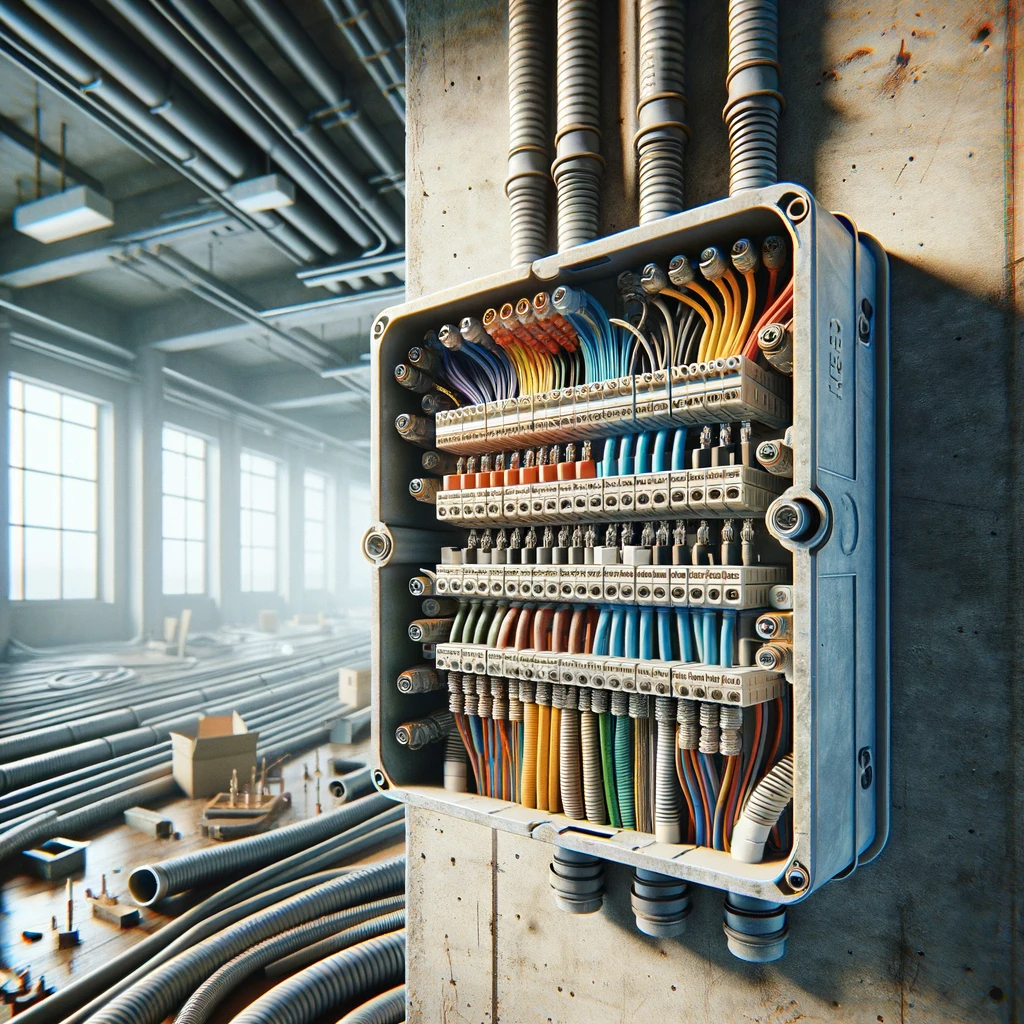
When Should You Use a Junction Box?
Having understood what a junction box is, its uses and where it should be positioned, let’s delve into another practical aspect – when you should use a junction box.
Important Considerations Before Installation
Before you decide to install a junction box, you must consider the following factors: the amount and type of electrical devices to be installed, possible future modifications to the electrical system, and safety regulations. Needless to say, it’s always recommended to consult a professional electrician before making any decisions.
Adding New Electrical Devices
A junction box becomes necessary whenever you plan on adding new electrical devices to a building, such as additional light fixtures, power outlets, or switches. Given that a junction box helps house these devices and keep electrical splices safe, it plays an imperative role when you’re considering upgrades.
Modifications to the Electrical System
Planning on remodeling or expanding your home or office? Remember, any modification to the existing electrical system almost always requires the addition of a new junction box. This ensures you won’t overload existing circuits and opens up the possibility for future electrical expansion.
Ensuring Safety and Compliance
Safety codes and compliance regulations provide other instances of when you should use a junction box. For example, in case there are exposed wires, installing a junction box can prevent potential risks. Always check with your local building department or with a certified electrician to ensure your set-up is up to code.
- Adding new electrical devices
- Modifications to the electrical system
- Ensuring safety and compliance
Consequences of Not Using a Junction Box
Neglecting to use a junction box can lead to several potential issues, all of which can severely compromise the safety and efficiency of your electrical system.
Electrical Fires
Exposed wires and crowded splices can lead to the increased potential of electrical fires, as they allow heat to accumulate instead of dissipating. Installing a junction box helps prevent this risk.
Compromised System Safety
Without a junction box, electrical wires can easily become damaged. This can lead to system failures and expensive maintenance down the line.
Code Violations
Not using a junction box when needed can result in a violation of building codes and safety regulations, leading to penalties and even necessitating complete rework of the electrical system in extreme cases.
Source: Electrical Basics
Knowledge of when to use a junction box is a vital aspect of electrical work.
Whether you plan on adding more devices, modifying the existing system, or just wish to adhere to safety regulations, knowing the correct time and place to utilize a junction box will help preserve your electrical system’s integrity, ensure safety, and foster compliance with safety codes.
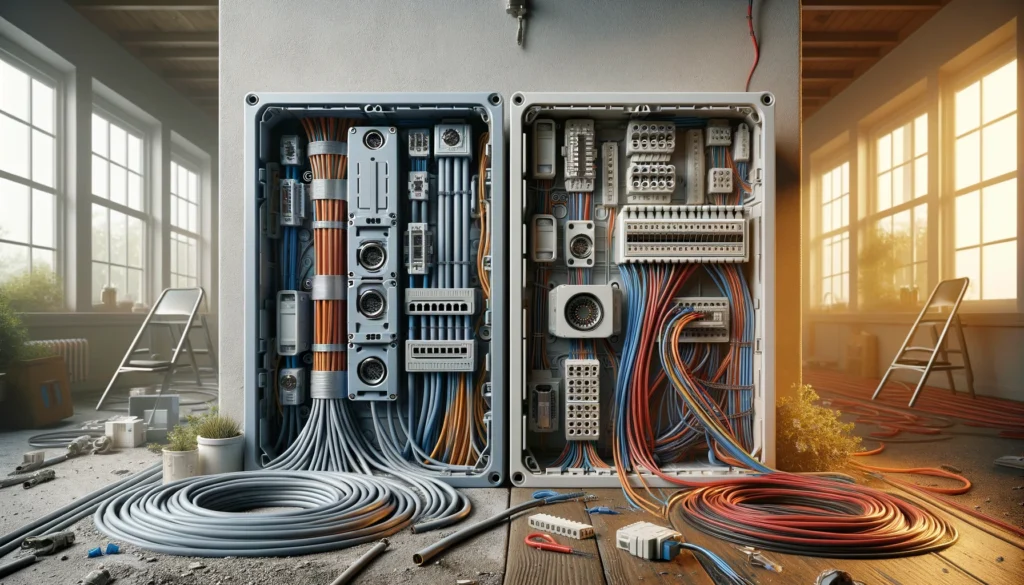
The Difference Between a Junction Box and a Joint Box in Construction
In the realm of construction and electric works, the terms ‘Junction Box’ and ‘Joint Box’ are prominent fixtures. They come into play in intricate electric circuits and should not be used interchangeably. Despite the similarity in names, they serve quite different functions. Let’s dive deep and nail down the difference between these two critical components.
Understanding The Junction Box
A Junction Box serves as a protective casing or enclosure for wired electrical connections, preventing them from environmental impact while ensuring safety from electrical shocks. It’s a central hub allowing the branching of electrical wiring within a premise.
Key Features of a Junction Box
- Resistant to heat and impact, ensuring durability
- Offers security against wire contact, preventing electrical shocks
- Facilitates future wiring modification
- Allows distribution of electric supply to various sections of a building
Moving on to The Joint Box
A Joint Box, on the other hand, is a tangle-free solution for connecting or ‘joining’ separate optical fiber cables. It’s widely used in telecommunications or network systems.
Key Features of a Joint Box
- Facilitates easy joining or terminating of optical fiber cables
- Resistant to environmental elements like water and dust
- Equipped to handle outdoor installations
- Offers high performance and optimum reliability
Crucial Differences: Junction Box vs. Joint Box
The Junction Box and Joint Box serve their unique purpose within their respective fields – electrical and telecommunications respectively. Here are two main differences:
| Junction Box | Joint Box |
|---|---|
| Serves as an enclosure for electrical wire connections | Responsible for joining or terminating optical fiber cables |
| Primarily used in electric systems in buildings | Used extensively in telecommunications or network systems |
Thus, understanding the difference between these two can make it easier for you to handle related tasks more effectively.
The Junction Box and Joint Box, while sounding similar, serve distinct purposes and operate in separate domains.
The Junction box finds its purpose in the electrical systems of buildings, while the Joint Box is a crucial component in telecommunications and network systems. Knowing their differences allows us to maximize their utility, ensuring safety and improving the performance of our electric and telecommunications infrastructure.
References
You may want to give these a read for further insights:
1. Understanding the workings of a Junction Box
2. The importance of a Joint Box in a telecommunications setup
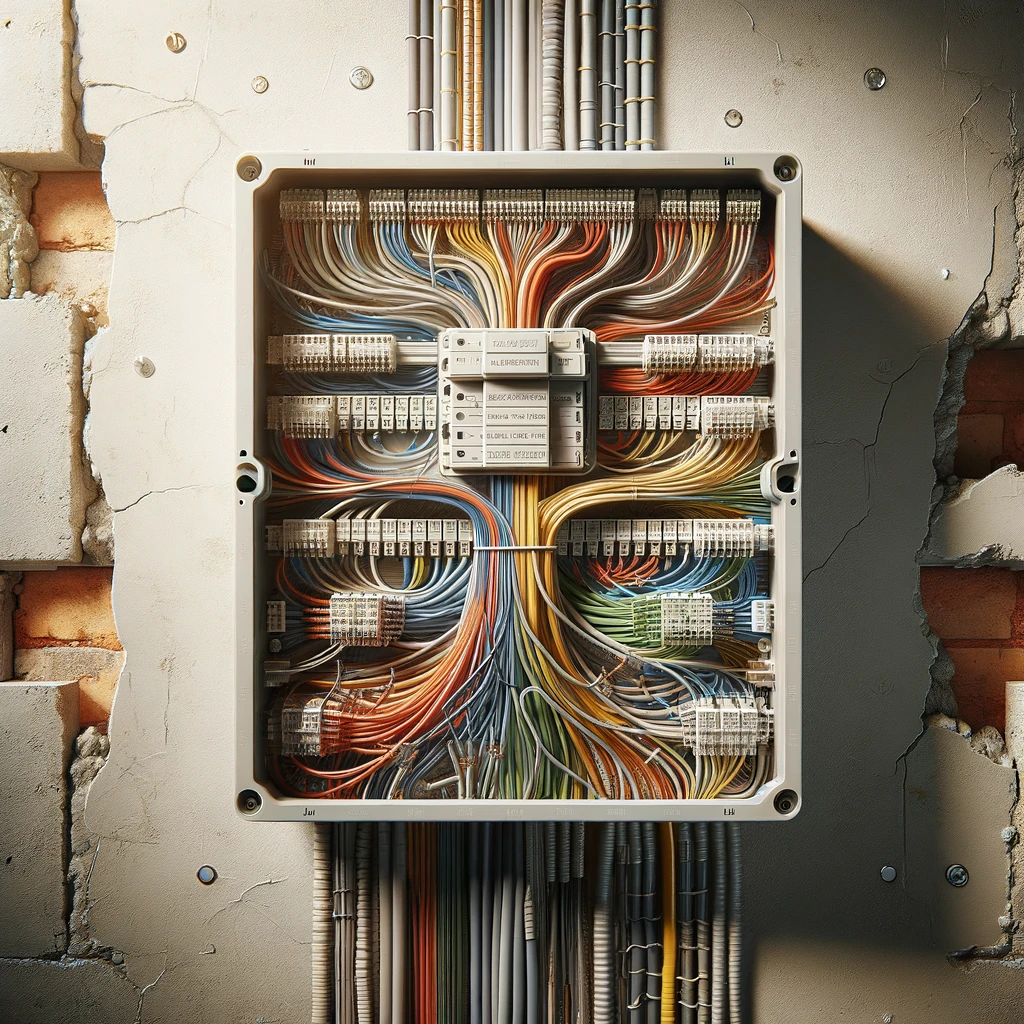
That’s A Wrap On Junction Boxes
Performing crucial tasks like safely enclosing electrical splices, housing electrical devices, and providing easy access for maintenance and changes, this component is undoubtedly integral to both large-scale and DIY constructions.
In our experience, knowledge of standard dimensions of junction boxes including single gang, double gang, three gang, and four gang is a useful insight for securing safety and efficiency within any electrical system.
From our perspective, this waist-deep dive into the concept of a junction box not only highlights its key role in the construction space – it also pushes us to realize the depth and intricacy of processes happening behind the scenes.
So next time, when you press a switch or plug into an outlet, remember the humble junction box ensuring your safety. Stay tuned as we continue to unravel more engaging insights into construction terminology!
